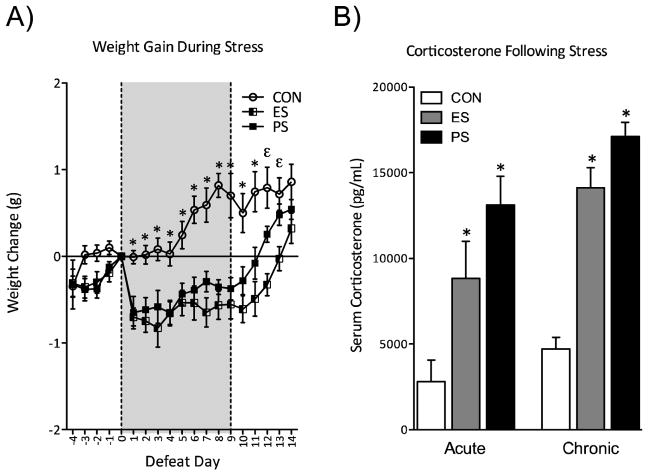Figure 1.
Emotional (ES) and physical (PS) stress disrupts neuroendocrine reactivity (A) ES and PS caused a reduction in weight gain across all 10 days of stress exposure, returning to control (CON) levels after 5 days of last stress session (n=11–12). (B) ES and PS also influenced serum corticosterone levels (CORT) both 40 minutes after a single defeat session (acute, n=9–10) and 24 hours (chronic, n=10) after the 10th defeat session. Both ES- and PS-exposed mice have significantly increased CORT levels compared to CON-exposed mice 40 minutes after a single defeat (p<0.05). Elevated CORT levels were also observed in ES- and PS-exposed mice 24 hours after the last defeat session compared to CON (p<0.001) Data is presented as weight change in grams, and serum corticosterone as pg/mL (mean ± SEM). (Data from Warren et al., 2013, with permission)

